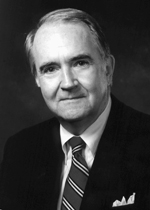The
Need For Speed
Mid-Atlantic Broadband Cooperative�s $27 Million
Project Goes Live
by Christine Motley, Contributing Writer
A seed has been sown in rural Southside Virginia, and
its crop � new technology and bright potential � is on the way.
Mid-Atlantic Broadband Cooperative (MBC) has launched
a $27 million broadband technology initiative, after four years of
searching for innovative ways to fund and deliver high-speed broadband
Internet access to largely rural Southside Virginia.
This Roots of Progress/Regional Backbone Initiative
will provide 700 miles of new fiber-optic cable creating an advanced,
open-access telecommunications infrastructure in Southside. The project
will connect five cities, 20 counties, and 56 industrial parks; and will
provide high-speed Internet access to nearly 700,000 Virginians and more
than 19,000 businesses who do not now have it. The initiative will also
reduce high-speed Internet access costs to businesses and consumers by at
least 20 percent.
MBC�s effort is a strategic partnership with The
Virginia Tobacco Indemnification and Community Revitalization Commission (VTICRC),
the U.S. Department of Commerce�s Economic Development Administration (EDA),
and Virginia�s Governor Mark R. Warner.
Construction will begin in October, with completion
expected in January 2006.
Mid-Atlantic Broadband Cooperative was formed in
November, 2003, to handle the grants for the project and secure
contractors to design, build and support the multi-discipline
telecommunications-network infrastructure. The idea of a cooperative
managing a project of this nature is unique.
|

Sen.
Charles Hawkins |
�As a cooperative, we can provide wholesale dark
fiber, manage high-speed broadband service, and increase competition for
competitive local-exchange carriers and Internet service providers,�
says David Hudgins, chairman for MBC and economic development manager for
Old Dominion Electric Cooperative (ODEC). For citizens and businesses,
this means substantial cost savings. �As a member cooperative, MBC will
reinvest any profits into the communities the project touches and return
dividends to its members.�
ODEC has been a catalyst behind the Roots of
Progress/Regional Backbone Initiative by helping establish a cooperative
and pledging staff and resources to the project since the idea was
conceived in 2000.
Cooperatives like ODEC and MBC are owned and operated
by their members, who live and work in the communities they serve; and
cooperatives are governed by member-elected boards of directors.
Initiative�s economic impact will be substantial
The economic impact of MBC�s Roots of
Progress/Regional Backbone Initiative
will be substantial. It will link the cities of Bedford, Danville,
Emporia, Lynchburg and Martinsville, as well as the counties of Amelia,
Appomattox, Bedford, Brunswick, Buckingham, Campbell, Charlotte,
Cumberland, Dinwiddie, Franklin, Greensville, Halifax, Henry, Lunenburg,
Mecklenburg, Nottoway, Patrick, Pittsylvania, Prince Edward and Sussex. MBC anticipates that broadband access in these areas
could create 1,560 new jobs, $70.2 million in new wages, and $143 million
in new investments.
|

Del.
Clarke Hogan |
These new technology-based jobs would carry
wages 54 percent higher than the average wage rate in Southside Virginia.
A Virginia Tech study projects that within three years after construction
of the regional broadband backbone is complete, a minimum of two
technology-based businesses will have located in 75 percent of the 35
targeted business, commercial and industrial parks. These technology-based
businesses would have median employment of 30 people at an average wage of
$45,000. The Virginia Tech study also projects that businesses would
invest approximately $2,750,000 in plant renovation and development.
Economic impact is already visible. The initiative
was announced and received $12 million in funding at a June 18 news
conference in Danville. On July 20, MBC�s contractor, Adesta, LLC, broke
ground at Riverstone Technology Park in South Boston where Halifax�s
Industrial Development Authority will build an estimated $15 million
building. Adesta, then, will establish a Network Operations and Control
Center for the Roots of Progress/Regional Broadband Initiative. Adesta
also plans to spend millions of dollars in capital and operating purchases
with local suppliers in
Southside, fill 22 permanent technical jobs, and
provide jobs for approximately 100 construction workers and engineers
during construction and implementation of the network.
Cited as national
top-ten Economic Development initiative
�This Administration has been committed to
advancing a progressive economic-development agenda for the Commonwealth,
and this initiative will certainly get the attention of new employers and
investors looking to tap the potential of Southside and Southwest
Virginia,� says Virginia Governor Mark R. Warner. Virginia�s
initiative was recently cited in Southern Business & Development
magazine as one of the nation�s top-10 economic-development initiatives.
�Through �simple strands of fiber,� we as a
Commission comprised of citizens from one end of Virginia to the other
made a decision,� says Del. Clarke N. Hogan, chairman of the technology
committee for VTICRC. �This project connects our communities to the
information age, opens an era of new economic opportunity, and invests a
once-in-a-lifetime allocation to a project that can invigorate the
imagination to the new possibilities of growing what some have called
�the industries of the mind.� With this investment in
telecommunications infrastructure, from here, you can be anywhere.�
A Model For The Future
Furthermore, this initiative will serve as a national
model for rural economic development. Funded with an initial investment of
$6 million each from the VTICRC and EDA, this initiative is among the most
creatively beneficial uses of funds from the national tobacco settlement.
�Certainly, this initiative is the cornerstone
investment by the Tobacco Commission, and will serve as a testament to the
commitment of not only the Commission, but the Commonwealth, to the
economic revitalization of Southside Virginia,� says Sen. Charles R.
Hawkins, chairman of the Commission. �Coupled with our grants for the
broadband telecommunications links in Southwest Virginia, we are creating
a seamless network that will literally connect most of rural Virginia to
the rest of the planet. It will open new markets for entrepreneurs,
enhance the competitiveness of our existing businesses, and attract the
types of employers we need to prepare our communities for the new
century.�
�The economic revitalization of Southside and
Southwest Virginia is a puzzle, and this is one, albeit significant, piece
of that puzzle,� adds Carthan F. Currin, III, Virginia Tobacco
Commission executive director. �This project, coupled with other
investments, will allow companies to discover the benefits of doing
business in this part of the nation and world. In that regard, we are
completing the circle of initiatives, but only beginning the
implementation of a comprehensive strategy for economic renewal.�
Fast facts